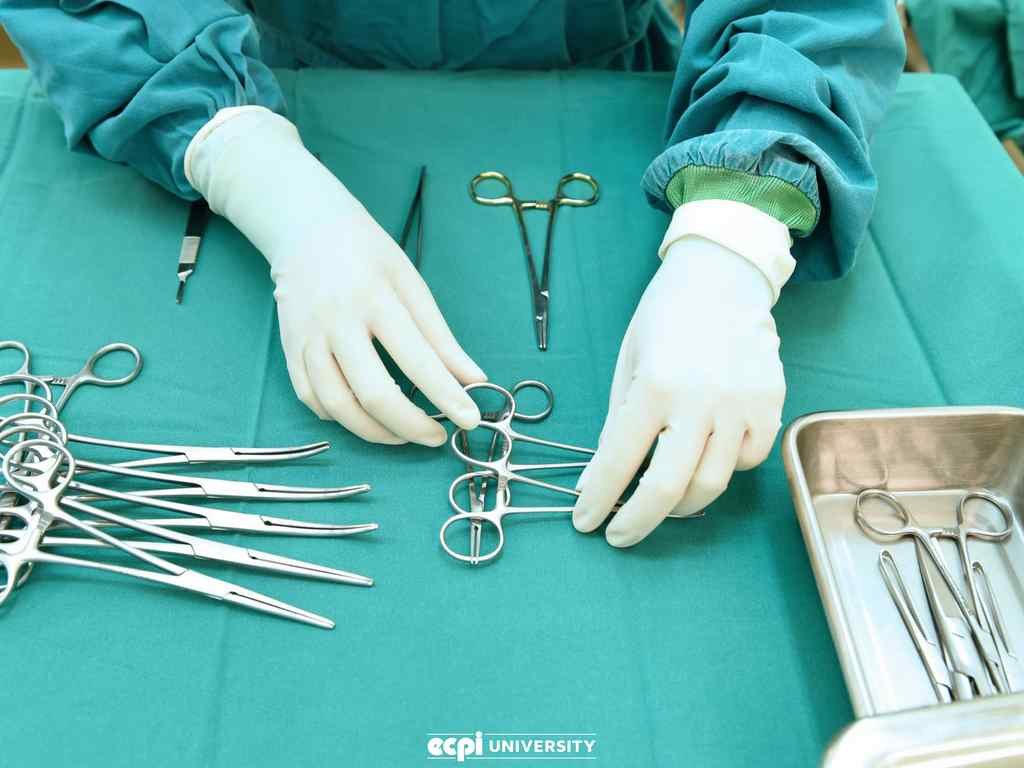To become a surgical tech, you need to complete a Surgical Technician program, which typically takes about 9-24 months. These programs are offered by community colleges, vocational schools, and some hospitals. After completing the program, you’ll need to pass a certification exam, such as the Certified Surgical Technologist (CST) exam, to become certified.
In surgical operations under the supervision of surgeons or registered nurses. They prepare operating rooms, arrange equipment, and help doctors during surgeries. This role is crucial for maintaining an environment and ensuring patient safety.
What does a surgical technologist do?
A surgical technologist, also known as a surgical technician, plays a critical role in the operating room by supporting surgeons and nurses during surgical procedures. Their responsibilities span before, during, and after surgery to ensure that operations run smoothly and safely.
Before Surgery:
Before a surgery, a surgical technologist must thoroughly prepare the operating room. This involves sterilizing and setting up all surgical instruments and equipment. They count all tools to ensure none are missing and arrange them in an easily accessible manner.
They also ensure that the environment is clean and set up drapes. Additionally, they check the functionality of surgical machines and devices, ensuring everything is in perfect working order. They also assist in preparing the patient by cleaning and shaving the incision site, and transporting the patient to the operating room.
During Surgery:
During surgery, a surgical technologist stands by the surgeon’s side, ready to hand over instruments and supplies as needed. They need to be familiar with surgical procedures. Maintaining a sterile field is paramount, and the technologist ensures that no contamination occurs by closely monitoring the environment.
They may also operate surgical equipment like suction machines, lights, and endoscopic cameras. Throughout the procedure, they keep an accurate count of sponges, needles, and instruments to prevent any items from being left inside the patient.
After Surgery:
After the surgery, a surgical technologist’s duties include counting all instruments and supplies to confirm nothing is missing, thus ensuring patient safety. They are assist in applying dressings to surgical sites and help transport patients to recovery rooms. They are responsible for cleaning the operating room. Surgical technicians also restock supplies and update inventory as necessary.
Requirements To Become a Surgical Tech:
Surgical technologist requirements typically include having a high school diploma or equivalent, completing an accredited surgical technologist program, and passing a certification exam such as the Certified Surgical Technologist (CST) exam. Continuing education is also important to maintain certification and stay updated with the latest surgical techniques and technologies.
Surgical technologists are essential members of the surgical team, ensuring that surgeries are performed efficiently and safely. Their meticulous attention to detail and comprehensive training make them invaluable in the high-stakes environment of the operating room.
Scope of surgical technologist:
The scope of surgical technologists is broad and essential within the healthcare field. They work alongside top surgeons, assisting in various surgical operations to ensure procedures run smoothly. Their responsibilities include preparing the operating room, sterilizing equipment, and providing instruments to surgeons during surgeries.
Surgical technologists also play a crucial role in patient care by maintaining clean environments and helping with post-operative procedures. With advancements in medical technology and an increasing number of surgeries, the demand for skilled surgical technologists continues to grow, making this a vital and rewarding career in healthcare.
How to become a surgical technologist:
To become a surgical technologist, complete a formal education program, often an associate degree or certificate. Gain clinical experience through internships, and obtain certification from a recognized body.
Research and Choose an Accredited Program:
The first step to becoming a surgical technologist is to research and select an accredited surgical technologist program. These programs are typically offered by community colleges, vocational schools, and some hospitals.
Accreditation by organizations such as the Commission on Accreditation of Allied Health Education Programs (CAAHEP) or the Accrediting Bureau of Health Education Schools (ABHES) ensures the program meets industry standards. When choosing a program, consider factors such as location, cost, curriculum, clinical experience opportunities, and the program’s success rates for certification exams and job placement.
Complete the Surgical Technologist Program:
Enroll in and complete the surgical technologist program, which can range from nine months to two years, depending on whether it is a certificate, diploma, or associate degree program. The curriculum typically includes courses in anatomy, physiology, microbiology, medical terminology, and sterile techniques.
Hands-on training is a critical component, with students gaining practical experience in operating rooms through clinical rotations. This blend of classroom instruction and real-world experience equips students with the knowledge and skills.
Gain Practical Experience:
Practical experience is crucial for surgical technologists. Many surgical technologist programs include clinical rotations in hospitals or surgical centers, providing students with hands-on experience. After certification, gaining additional experience through entry-level positions in various surgical settings can further enhance expertise.
Working alongside experienced surgical teams allows new technologists to learn advanced techniques, understand different surgical procedures, and develop the ability to anticipate surgeons’ needs, all of which are critical for career advancement.
Obtain Certification:
After completing the surgical technologist program, obtaining certification is the next essential step. Certification demonstrates a surgical technologist’s knowledge and competence in the field and is often required by employers.
To earn the CST credential, candidates must pass a comprehensive exam that covers various aspects of surgical technology. Some states may also have specific licensing requirements, so it’s important to research and fulfill any additional state-specific criteria.
Specialization:
Surgical techs specialize in preparing surgical areas, assisting during operations, and ensuring sterile environments.
- Cardiovascular Surgery
- Orthopedic Surgery
- Neurosurgery
- Pediatric Surgery
- Plastic and Reconstructive Surgery
Professional Growth and Networking:
Actively seek opportunities for professional growth and networking. Join professional organizations such as the Association of Surgical Technologists (AST) to connect with peers, access resources, and stay informed about industry developments. Networking can lead to job opportunities, mentorship, and collaboration with other healthcare professionals.
Pursue leadership roles, contribute to professional publications, and participate in community outreach to enhance your professional profile. Continuous professional development and networking are key to a successful and fulfilling career as a surgical technologist, enabling you to contribute significantly to the healthcare field.
Conclusion:
Becoming a certified surgical technologist is a rewarding journey that involves comprehensive education, hands-on training, and certification. By researching accredited programs, completing rigorous coursework, gaining practical experience, obtaining certification, and pursuing continuing education, aspiring surgical technologists can develop the skills and knowledge necessary for success in the operating room. This career not only offers a critical role in patient care but also provides opportunities for specialization and professional growth. By following these steps, individuals can embark on a fulfilling and impactful career as a certified surgical technician, contributing significantly to the healthcare field.
FAQ’s
Is certification required to work as a surgical technologist?
While not always mandatory, certification is highly recommended and often required by employers. The Certified Surgical Technologist (CST) credential, offered by the National Board of Surgical Technology and Surgical Assisting (NBSTSA), is the most recognized certification. Certification demonstrates your competence and commitment to the profession.
What is the job outlook for surgical technologists?
The job outlook for surgical technologists is positive, with demand expected to grow due to advances in medical technology and an increasing number of surgeries. Employment opportunities are available in hospitals, outpatient surgical centers, and other healthcare facilities.
Is Become a Surgical Tech Worth It?
Becoming a surgical tech is worth it for those passionate about healthcare and surgery. It offers a rewarding career with a strong job outlook, opportunities for specialization, and competitive salaries. Surgical techs play a crucial role in patient care and surgical teams, making it a fulfilling and impactful profession.
What Is the Surgical Technologist Work Environment Like?
The surgical technologist work environment is typically fast-paced and high-stress, often within hospitals, outpatient surgical centers, and clinics. Technologists work in sterile operating rooms, standing for long periods, and must be alert and precise. They collaborate closely with surgeons, nurses, and other medical staff, ensuring the smooth and safe execution of surgical procedures.
What subjects are covered in a surgical technologist program?
Surgical technologist programs cover a range of subjects, including anatomy, physiology, microbiology, medical terminology, surgical procedures, sterile techniques, and patient care. The curriculum typically combines classroom instruction with hands-on clinical experience in operating rooms.



